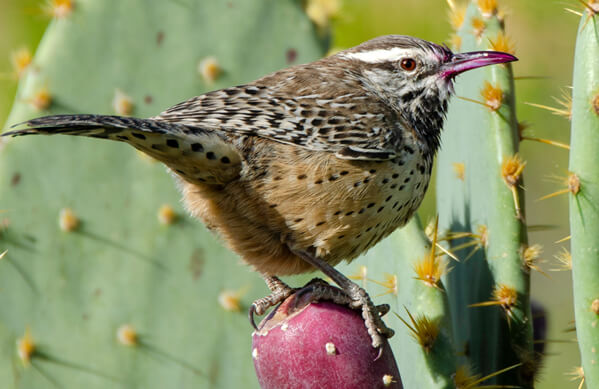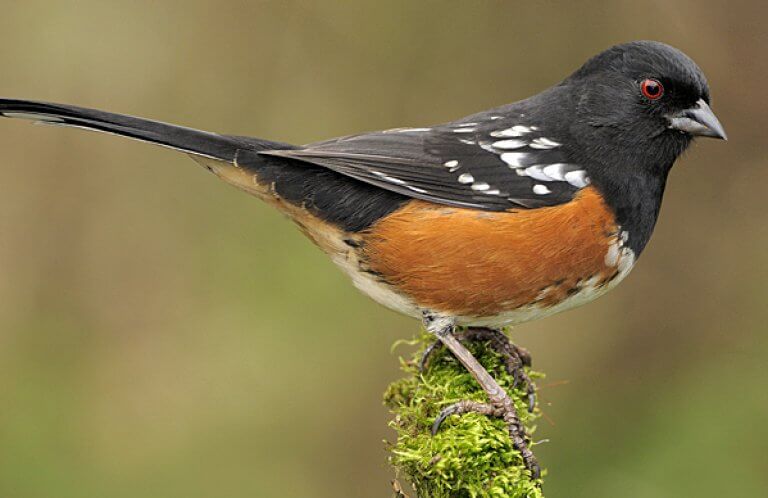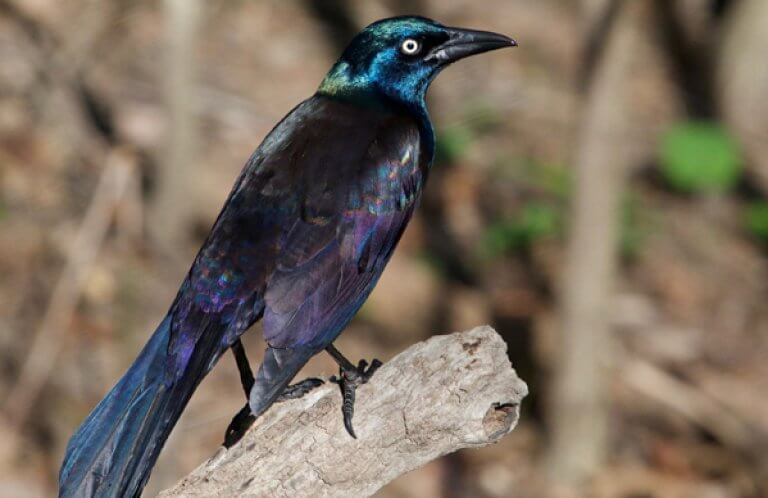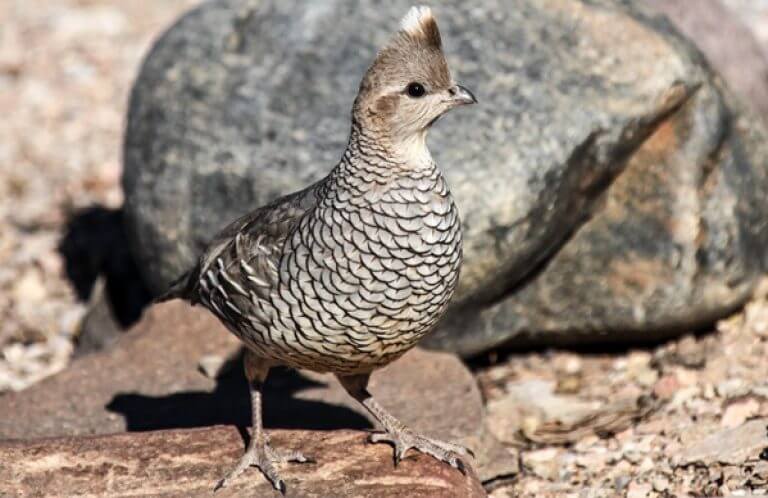About the Cactus Wren
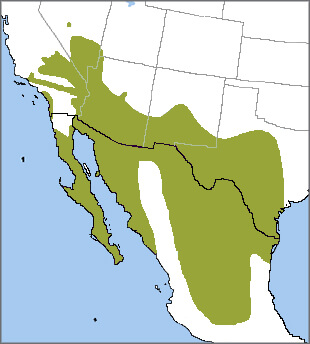
The Cactus Wren is the largest wren found in the United States — about the size of a Spotted Towhee. Its curious nature and loud, chattering calls make this bird one of the most well-known species of the southwestern desert.
The Cactus Wren's genus name Campylorhynchus derives from the Greek words for "curved beak." Its species name brunneicapillus is formed from the Latin words for "brown" and "hair," referring to this bird's brown cap and back.
Spiking Potential Predators
By using cholla and saguaro cacti as nesting sites, the Cactus Wren benefits from spiky protection from potential nest predators, particularly snakes. The wren's bulky, football-shaped nest provides additional protection, with a narrow, tube-like side entrance that limits access to the nest chamber. Interestingly, the nest entrance is often oriented to take advantage of the cooling effects of prevailing winds.
Seven Cactus Wren subspecies are known, and populations vary dramatically in the amount of buff on the belly and the density and extent of the black spotting below.
Big, Bold Bird
True to their name, these wrens prefer desert habitats dominated by spiny cacti, as well as thorny trees and shrubs. Coastal populations can also be found in chaparral habitat.
Cactus Wrens sing, forage, and even place their nests in full view. Although they hold the title of "largest" wren north of the Mexican border, several tropical species are either equal or larger in size. Unlike other wrens in the United States, the Cactus Wren keeps its tail level, not cocked.
With a rough, grating song, this wren rivals the Common Grackle in terms of unmusicality. It's often compared to the sound of a car engine turning over before it can start!
(Audio by Jarrod Swackhamer, XC304426. Accessible at www.xeno-canto.org/304426)
Flexible Feeders
Like other desert-dwelling birds such as the Bendire's Thrasher and Scaled Quail, the Cactus Wren gets almost all of its hydration from the food it eats. Individuals usually forage for food on the ground, probing under leaves and ground litter with their long, curved beaks in search of insects such as grasshoppers, beetles, and wasps. They also consume fruit, seeds, and even small lizards.
These resourceful birds deal with their scorching surroundings by changing their feeding behavior as temperatures climb throughout the day. On cooler mornings, Cactus Wrens forage on the ground in the open. As temperatures rise, they shift their feeding to shady, cooler areas under cover, including in large, thorny shrubs and cacti. During particularly hot afternoons, the birds take a break to rest in the shade.
Sign up for ABC's eNews to learn how you can help protect birds
Social, Serial Nesters
Cactus Wrens are usually seen in pairs or family groups. Pairs defend a permanent, year-round territory. Both birds in a pair perform a conspicuous greeting display, perching upright with wings and tail spread, all the while calling back and forth to each other.
Nesting occurs on this same territory, with both the male and female working together to build the nest. While the female lays her first clutch, the male will start to build a second nest to rear another brood. This process is repeated for successive broods — usually two or three, but up to six broods may be attempted in a year. The size of each clutch is determined by food supply, an adaptation Cactus Wrens have made to changing food availability in their arid habitats.

Conserving Cacti — and Wrens
Although the Cactus Wren remains common and adapts well to suburban habitats with suitable native vegetation for nesting, Partners in Flight (PIF) rates the species as a "Common Bird in Steep Decline." Populations have declined by 64 percent, according to the most recent species assessment.
Cactus Wrens, like so many other bird species, are threatened by habitat loss due to human-caused landscape changes. Some coastal populations in southern California are particularly threatened because widespread development has isolated populations within separate “islands” of habitat.
Studies show that large wildfires can also isolate Cactus Wrens, which are reluctant to disperse far from established year-round territories. Other issues include invasive vegetation, which blankets open spaces the birds depend upon for foraging, and outdoor cats, which kill many birds, particularly in suburban settings.
ABC's conservation advocacy programs work to reduce or remove some of the challenges faced by the Cactus Wren. Our BirdScapes approach to conservation helps to preserve desert habitats in both the United States and Mexico, habitat also used by priority species such as the Costa's Hummingbird and Lucy's Warbler.
ABC's Cats Indoors program offers solutions to the challenges created by free-roaming cats, educates the public and policymakers, and advocates for responsible pet ownership.
Donate to support ABC's conservation mission!





































